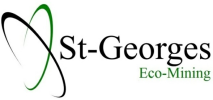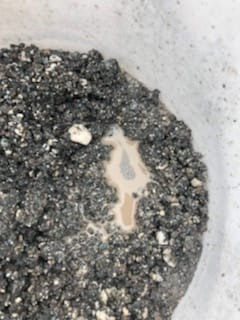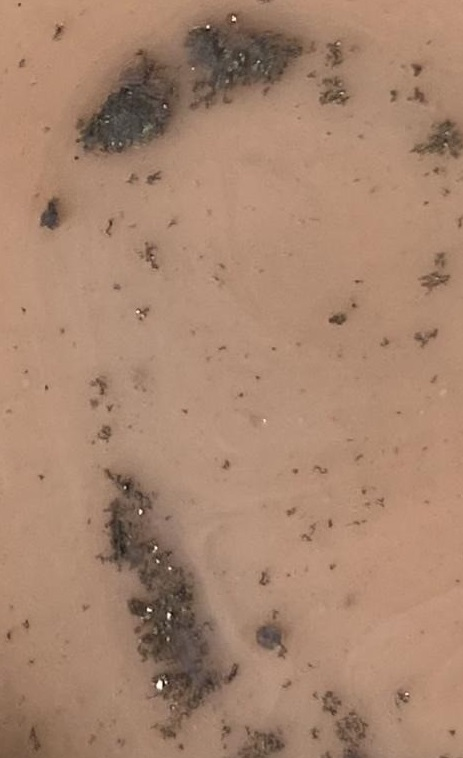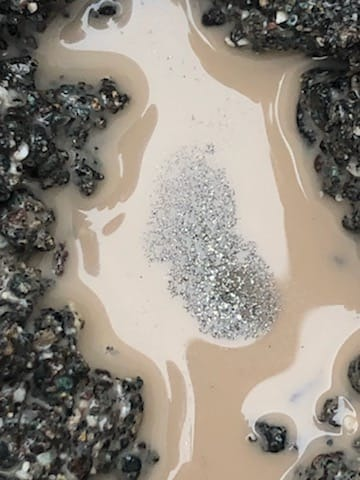First Hole Completed at Thor Gold Project
(TheNewswire)



Reykjavik - TheNewswire - September 15, 2020 - St-Georges Eco-Mining Corp. (CSE:SX) (CNSX:SX.CN) (OTC:SXOOF) (FSE:85G1) is pleased to disclose that it has completed its first reverse circulation drill hole at the Thor project in the vicinity of Reykjavik in Iceland. The hole was positioned to test a previous surface sample that assayed 37.4 g/t gold and 69.3 g/t silver. The hole was successfully ended at 124 meters.
The exploration team lead by Pr Helen Salmon and supported by Herb Duerr and lead field geologist Gary McLearn, had identified earlier in August a new target zone outside the historically explored area following the grab sample results from sample 008 that yielded 69.3 g/t silver, 0.216% Copper & 37.4 g/t Gold. (See Company’s Press Release from August 21, 2020).
Because of high grades in past mining and the presence of visible gold in past work, a decision to sample the hole on 30 cm intervals was made by management. Our contract geologist may have observed visible grains of gold and possible accessory silver minerals near the bottom of the hole. As such, management has decided to do a standard 50 assay ton fire assay with atomic absorption finish for both gold and silver. Any samples assaying over 0.8 g/t gold will be automatically reassayed. If the samples are inconsistent, the lab will be instructed to do metal screening for particulate gold on reject material.
The current surface exploration campaign conducted one drill hole via reverse circulation using a standard hammer drill bit of 5.5 inches (~14 cm) in size. The drilling was conducted under the constant supervision of the Company’s field geologist, and all the material of every 30cm of depth was collected in plastic buckets sealed, identified with a code, and carried to St-Georges’ secure warehousing facilities in Reykjavik. From there, the geologists will prepare a representative sample for every bucket. Based on the visual analysis conducted while logging the material so far, the Company expects to send over 400 samples to be assayed to ALS Global Laboratories (ISO/IEC 17025 accredited) in Loughrea, Ireland. The Company intends to request a rush treatment for the assay of these samples.
The hole completed went from surface to a depth of 124 meters on an azimuth of 110 degrees. The drill rig cased the hole to 2 meters depth encountering approximately 1.5 meters of overburden at the surface. The mineralization encountered is compatible with the type often favorable for gold on the Thor project consisting of quartz veining adjacent to basalt with apparent abundant pyrite and accessory sulphides. Visible gold and silver may have been identified in the field by the Company’s field geologist. These sections are still being logged and sampled and prepared to be sent to the laboratory. See Figures 1, 2 & 3.
Figure 1. Mineralization floating on top of drilling mud
Figure 2. Mineralization from quartz veining

Figure 3. Mineralization close up from Fig. 2
St-Georges’ President & CEO, Vilhjalmur Thor Vilhjalmsson, commented: “(…) We are encouraged by the current pace of the exploration work on the Thor Gold Project. The team has worked with the constraints of the COVID-19 quarantine and additional precautions imposed by the new government regulations, and still ended-up delivering within the aggressive target dates we had put forward (…) We are particularly pleased with the field team led by Gary. We have given the team much leeway and trusted their professional expertise. Gary took a bold decision in choosing an underexplored location for the only deeper drill hole we were authorized for to date under our agreement with Melmis. For what we know so far, it was worth the risk (…) we expect to close the transaction with Melmis this month, and we will keep the drilling contractor busy for the foreseeable future on the Thor Gold Project (…)”.
About Thor Gold
The Thormodsdalur Gold Project is located about 20km east of the city center of Reykjavík and south-east of the Lake Hafravatn. The project was discovered in 1908. The property produced a gold concentrate from 1911 to 1925, which shipped to Germany for processing. Over 300 meters of tunnels explored and mined one or more quartz veins and wall rock below open cuts at the surface.
Studies between 1996 and 2013 identified the project mineralization as a low sulfidation system hosted by basic to intermediate flows of Pliocene to Miocene age. The host contains banded chalcedony and ginguro within a fault zone up to 5 meters in width. To date, the identified gold trend has a known strike length of 700 meters determined by drill intercepts. Petrographic analysis of the vein material identified gold occurring in its free form and as part of an assemblage with pyrite and chalcopyrite. Petrographic and XRD studies show an evolution of the vein system from the zeolite assemblage to quartz-adularia and lastly, to minor calcite.
Thirty-two holes have been drilled within the license area, for a total of 2439 meters. Gold values vary from less than 0.5 g/t to a maximum of 415 g/t. (These values were obtained from selected random intervals and cannot be construed to be representative of any particular thickness or overall length.) Historically, the best intercepts from the diamond drilling are 33.5m of 8.0 g/t Au (true thickness) and 5.2m of 35.4 g/t Au (true thickness).
Gary McLearn, A professional geoscientist (Ontario APGO #2900) and an Independent Qualified Person as defined by National Instrument 43-101, has prepared, supervised the preparation or approved the scientific and technical disclosure in the news release.
ON BEHALF OF THE BOARD OF DIRECTORS
“Vilhjalmur Thor Vilhjalmsson”
Vilhjalmur Thor Vilhjalmsson
President and CEO
About St-Georges
St-Georges is developing new technologies to solve some of the most common environmental problems in the mining industry.
The Company controls directly or indirectly, through rights of first refusal, all of the active mineral tenures in Iceland. It also explores for nickel on the Julie Nickel Project & for industrial minerals on Quebec’s North Shore and for lithium and rare metals in Northern Quebec and in the Abitibi region. Headquartered in Montreal, St-Georges’ stock is listed on the CSE under the symbol SX, on the US OTC under the Symbol SXOOF and on the Frankfurt Stock Exchange under the symbol 85G1
The Canadian Securities Exchange (CSE) has not reviewed and does not accept responsibility for the adequacy or the accuracy of the contents of this release.
Copyright (c) 2020 TheNewswire - All rights reserved.

